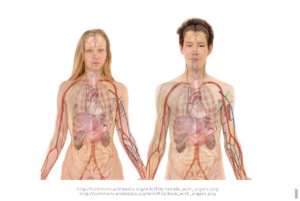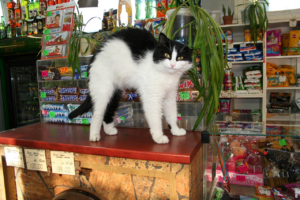The Fascinating Science Behind Our Circular Navigation
Have you ever wondered why, when we find ourselves lost, we often end up going in circles? It’s a curious phenomenon that has puzzled explorers, hikers, and even seasoned navigators throughout history. Join us on a journey as we delve into the intriguing science behind our circular navigation.
The Vestibular System: Our Internal Compass
One of the primary reasons for our tendency to go in circles when lost lies within our own bodies – the vestibular system. This remarkable system, located within our inner ears, helps us maintain balance, spatial orientation, and even aids in our navigation.
The Influence of Environmental Factors
While our vestibular system plays a significant role, various environmental factors also contribute to our circular navigation. Researchers have discovered that when landmarks or cues are absent or unclear, we rely heavily on our internal compass. However, subtle inclines, wind patterns, and even the Earth’s magnetic field can unknowingly influence our direction, leading us astray.
The Role of Cognitive Biases
Another fascinating aspect of circular navigation is the impact of cognitive biases on our decision-making. The brain’s inherent tendency to favor familiar routes or recurring patterns often leads us in circles. These biases, including the confirmation bias and the framing effect, can hinder our ability to break free from the circular path.
Lessons from Nature
Interestingly, circular navigation is not unique to humans. Various animal species also exhibit similar behaviors when disoriented. For example, ants rely on chemical trails and their own internal navigation systems, but when disrupted, they too can find themselves going in circles. Studying these patterns in nature provides valuable insights into the universal nature of circular navigation.
Post
Post
Overcoming the Circular Trap
Breaking free from the circular trap requires a combination of self-awareness, preparedness, and a mindful approach to navigation. By understanding the science behind our circular tendencies, we can learn to recognize the signs and make conscious efforts to choose new directions. Utilizing modern navigation tools and techniques can also help us overcome our innate circular navigation instincts.
The Endless Adventure of Navigation
While going in circles when lost may seem frustrating, it is an inherent part of our human navigation experience. Embracing the journey, both physically and metaphorically, allows us to appreciate the wonders of exploration. So, the next time you find yourself going in circles, remember that you are part of an ancient tradition of navigating the unknown – a tradition that continues to shape our understanding of the world.



